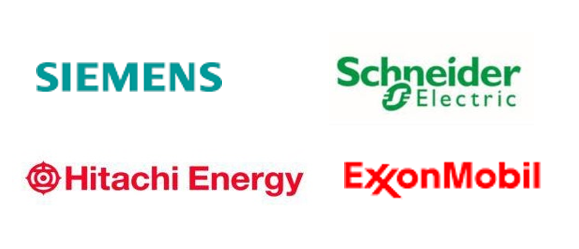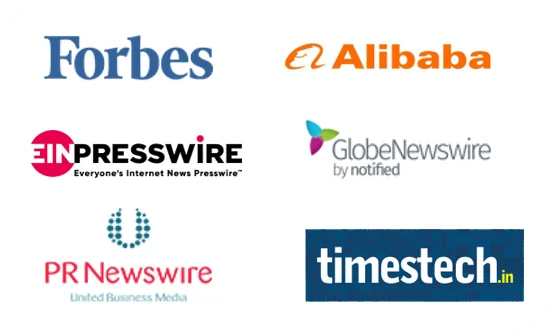Market Overview:
"The global nickel cadmium battery market was valued at US$ 1.3 billion in 2024 and is expected to register a CAGR of 2.8% over the forecast period and reach US$ 1.7 billion in 2033."
|
Report Attributes |
Details |
|
Base Year |
2024 |
|
Forecast Years |
2025-2033 |
|
Historical Years |
2021-2024 |
|
Nickel Cadmium Battery Market Growth Rate (2025-2033) |
2.8% |
Nickel Cadmium (Ni-Cd) batteries are rechargeable power sources known for their durability and high cycle life. These batteries offer consistent performance over a wide range of temperatures and have been widely used in various applications, from portable electronics to emergency backup systems. Ni-Cd batteries are valued for their ability to deliver a stable voltage output throughout their discharge cycle and resist the memory effect—a loss of capacity due to incomplete discharges. Two main types of batteries are vented and sealed. Vented Ni-Cd batteries require regular maintenance, including electrolyte level checks, while sealed Ni-Cd batteries are maintenance-free and more suitable for applications where accessibility is limited. Despite their advantages, popularity of Ni-Cd batteries has reduced in recent years due to environmental impact and the emergence of more efficient battery chemistries.
The global Nickel Cadmium (Ni-Cd) battery market is registering steady revenue growth, driven by application diversity across industries such as electronics, transportation, and telecommunications. Despite facing competition from newer battery technologies, Ni-Cd batteries maintain a significant market share due to their reliability, durability, and ability to operate in extreme conditions. However, increasing environmental concerns and regulations have prompted a shift towards greener alternatives. As a response, manufacturers are investing in recycling initiatives and developing advanced Ni-Cd technologies that address environmental drawbacks. Market analysis suggests a continued but moderate growth trajectory, with a focus on sustainability and optimizing Ni-Cd battery services for specific niche applications.
Nickel Cadmium Battery Market Trends and Drivers:
Industrial Demand: Nickel Cadmium (Ni-Cd) batteries are extensively used in industries requiring reliable power sources for backup and remote applications. The industrial sector's consistent need for backup power solutions drives sustained demand for Ni-Cd batteries.
Niche Applications: Ni-Cd batteries excel in applications with demanding operational environments, such as aerospace and defense, where their ability to withstand extreme temperatures and deliver stable power gives them a competitive edge.
Reliability and Durability: Ni-Cd batteries offer a high cycle life and consistent performance, making them a preferred choice for critical applications like emergency lighting and backup power systems. Their long service life reduces replacement frequency, positively impacting revenue.
Infrastructure Growth: As developing countries focus on expanding their infrastructure, Ni-Cd batteries find applications in telecom towers, remote monitoring, and renewable energy installations, driving incremental revenue growth.
Customization and Services: Manufacturers offer tailored Ni-Cd battery solutions and maintenance services, addressing specific industry needs. This customization enhances customer satisfaction and loyalty, leading to repeat business and revenue growth.
Environmental Adaptation: Despite newer technologies, Ni-Cd batteries' ability to function reliably in extreme temperatures and harsh conditions remains unparalleled. This adaptability ensures their continued relevance in industries like mining, where they power equipment in challenging environments.
Nickel Cadmium Battery Market Restraining Factors:
Environmental Concerns: Ni-Cd batteries contain toxic heavy metals like cadmium, leading to environmental pollution and health risks during production, usage, and disposal. Growing environmental awareness has shifted demand towards more eco-friendly battery alternatives, impacting Ni-Cd sales.
Regulatory Restrictions: Stringent regulations governing hazardous substances and waste disposal have led to limitations on the use and disposal of Ni-Cd batteries. Compliance costs and restrictions hinder market expansion, and affect revenue growth.
Advancements in Battery Technologies: The emergence of newer, more efficient battery chemistries, like lithium-ion and nickel-metal hydride, provides better energy density and reduced environmental impact. This technological competition limits Ni-Cd batteries' market share and revenue potential.
Memory Effect: Despite their durability, Ni-Cd batteries still experience memory effect, reducing their usable capacity over time. This limitation affects their long-term performance, leading to lower customer satisfaction and repeat business.
Maintenance Requirements: Vented Ni-Cd batteries demand regular maintenance due to their electrolyte levels and water topping needs. This increases operational costs and poses challenges in remote or inaccessible installations.
Limited Energy Density: Ni-Cd batteries offer lower energy density compared to some modern alternatives, affecting their suitability for high-demand applications like electric vehicles. This limitation hampers their adoption in emerging industries and restricts revenue growth.
Nickel Cadmium Battery Market Opportunities:
Recycling Initiatives: Companies can capitalize on the demand for sustainable solutions by investing in efficient Ni-Cd battery recycling processes. This creates an additional revenue stream by offering recycling services to customers and adhering to environmental regulations.
Upgraded Formulations: Research and development efforts can focus on improving Ni-Cd battery chemistry, enhancing energy density and reducing toxic content. Creating advanced Ni-Cd variants with higher performance characteristics opens opportunities in specialized applications and premium markets.
Remote and Industrial Applications: Targeting industries needing reliable backup power in remote and challenging environments, such as oil and gas exploration or mining, offers a significant revenue stream. Ni-Cd batteries' durability and resilience make them ideal for such applications.
Maintenance Services: Providing maintenance and monitoring services for Ni-Cd battery installations in critical sectors ensures consistent performance and longevity. Companies can charge for periodic checks, maintenance, and performance optimization.
Custom Solutions: Offering tailored Ni-Cd battery solutions for specific applications, such as aviation or defense, taps into niche markets and demands premium pricing. Customization addresses unique needs and fosters long-term partnerships.
Emerging Markets: Focusing on regions with expanding infrastructure projects, like developing countries' telecom networks or remote energy installations, presents revenue opportunities. Ni-Cd batteries can serve as reliable backup power solutions in these growing markets.
Nickel Cadmium Battery Market Segmentation:
By Battery Type:
- Vented Nickel Cadmium Batteries
- Sealed Nickel Cadmium Batteries
By Application:
- Telecom & Communication
- Emergency Lighting
- Power Tools
- Aerospace & Defense
- Industrial Equipment
By End-User Industry:
- Telecommunications
- Energy & Utilities
- Manufacturing
- Transportation
- Aerospace & Defense
By Capacity Range:
- Small (Below 1000 mAh)
- Medium (1000 - 5000 mAh)
- Large (Above 5000 mAh)
By Sales Channel:
- Original Equipment Manufacturers (OEMs)
- Distributors & Retailers
- Online Retail
- Direct Sales
- Aftermarket
Nickel Cadmium Battery Market, By Region:
North America:
- United States
- Canada
Europe:
- Germany
- The U.K.
- France
- Spain
- Italy
- Russia
- Poland
- BENELUX
- NORDIC
- Rest of Europe
Asia Pacific:
- China
- Japan
- India
- South Korea
- ASEAN
- Australia & New Zealand
- Rest of Asia Pacific
Latin America:
- Brazil
- Mexico
- Argentina
Middle East & Africa:
- Saudi Arabia
- South Africa
- United Arab Emirates
- Israel
In the global nickel cadmium battery market, regional analysis highlights key regions and countries driving product sales and demand. Industrialized economies such as North America and Europe indicate high preference for Ni-Cd batteries in critical applications due to their reliability. Developing regions such as Asia-Pacific exhibit potential, driven by infrastructure growth and expanding industries. As these economies modernize, demand for backup power solutions in remote areas creates opportunities. Also, advancements like improved energy density and recycling initiatives enhance market prospects.
Leading Companies in Nickel Cadmium Battery Market & Competitive Landscape:
The global Nickel Cadmium (Ni-Cd) battery market is characterized by a competitive landscape influenced by technological advancements, environmental concerns, and the emergence of alternative battery technologies. While Ni-Cd batteries have established presence, dominance has waned due to cadmium content and emergence of more environmentally friendly options.
Among the leading Ni-Cd Battery manufacturers, Saft Groupe S.A., which is a subsidiary of TotalEnergies, accounts for a significantly large revenue share in the global market. Renowned for its innovation in energy storage solutions, Saft has adapted Ni-Cd technology for various applications, particularly in industries demanding reliable backup power and remote operations.
Exide Technologies is another prominent player, recognized for its wide array of battery solutions catering to diverse sectors, including transportation, industrial, and renewable energy. With a global reach and emphasis on sustainable solutions, Exide maintains a competitive edge in the Ni-Cd Battery market.
GP Batteries International Limited, headquartered in Hong Kong, stands out as a global manufacturer. The company's Ni-Cd batteries find applications in numerous fields, from consumer electronics to industrial equipment, contributing to its prominent standing in the market.
However, the Ni-Cd Battery market has witnessed increased competition from alternatives such as lithium-ion and nickel-metal hydride batteries. Companies such as Panasonic Corporation and LG Chem Ltd. have capitalized on the efficiency and reduced environmental impact of these technologies, challenging Ni-Cd batteries' historical dominance.
Environmental regulations and consumer preferences have prompted leading manufacturers to diversifying their offerings to include environmentally friendlier options while refining Ni-Cd technology for specific niche applications requiring durability and performance.
Company List:
- Saft Groupe S.A.
- Exide Technologies
- GP Batteries International Limited
- Panasonic Corporation
- LG Chem Ltd.
- EnerSys
- EverExceed Corporation
- FDK Corporation
- Hoppecke Batteries Inc.
- GS Yuasa Corporation
- Hawker GmbH (EnerSys)
- Hoppecke Batteries
- CSB Battery Co., Ltd.
- Narada Power Source Co., Ltd.
- Beijing Epsolar Technology Co., Ltd.
Research Scope
|
Report Metric |
Report Details |
|
Nickel Cadmium Battery Market Size available for the years |
2022-2033 |
|
Base Year |
2024 |
|
Forecast Period |
2025-2033 |
|
Compound Annual Growth Rate (CAGR) |
2.8% |
|
Segment Covered |
Battery Type: Vented Nickel Cadmium Batteries, Sealed Nickel Cadmium Batteries Application: Telecom & Communication, Emergency Lighting, Power Tools, Aerospace & Defense, Industrial Equipment End-User Industry: Telecommunications, Energy & Utilities, Manufacturing, Transportation, Aerospace & Defense Capacity Range: Small (Below 1000 mAh), Medium (1000 - 5000 mAh), Large (Above 5000 mAh) Sales Channel: Original Equipment Manufacturers (OEMs), Distributors & Retailers, Online Retail, Direct Sales, Aftermarket |
|
Regions Covered |
North America: The U.S. & Canada Latin America: Brazil, Mexico, Argentina, & Rest of Latin America Asia Pacific: China, India, Japan, Australia & New Zealand, ASEAN, & Rest of Asia Pacific Europe: Germany, The U.K., France, Spain, Italy, Russia, Poland, BENELUX, NORDIC, & Rest of Europe The Middle East & Africa: Saudi Arabia, United Arab Emirates, South Africa, Egypt, Israel, and Rest of MEA |
|
Fastest Growing Market in Europe |
Germany |
|
Largest Market |
North America |
|
Key Players |
Saft Groupe S.A., Exide Technologies, GP Batteries International Limited, Panasonic Corporation, LG Chem Ltd., EnerSys, EverExceed Corporation, FDK Corporation, Hoppecke Batteries Inc., GS Yuasa Corporation, Hawker GmbH (EnerSys), Hoppecke Batteries, CSB Battery Co., Ltd., Narada Power Source Co., Ltd., Beijing Epsolar Technology Co., Ltd., among others. |
Frequently Asked Question
What is the size of the global nickel cadmium battery market in 2024?
The global nickel cadmium battery market size reached US$ 1.3 billion in 2024.
At what CAGR will the global nickel cadmium battery market expand?
The global nickel cadmium battery market is expected to register a 2.8% CAGR through 2025-2033.
How big can the global nickel cadmium battery market be by 2033?
The market is estimated to reach US$ 1.7 billion by 2033.
How is the global nickel cadmium battery market report segmented?
The global nickel cadmium battery market report segmentation is based on battery type, application, capacity range, end-user industry, sales channel, and regions.
Who are the key players in the global nickel cadmium battery market report?
Key players in the global nickel cadmium battery market report include Saft Groupe S.A., Exide Technologies, GP Batteries International Limited, Panasonic Corporation, LG Chem Ltd., EnerSys, EverExceed Corporation, FDK Corporation, Hoppecke Batteries Inc., GS Yuasa Corporation, Hawker GmbH (EnerSys), CSB Battery Co., Ltd., Narada Power Source Co., Ltd., Beijing Epsolar Technology Co., Ltd., among others.

